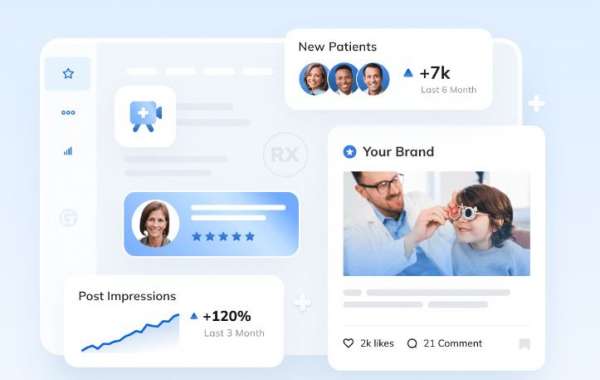Conducting market research is a critical step for any business, particularly in the Durable Medical Equipment (DME) sector, where understanding your target market can significantly impact your growth and profitability. This article will guide you through the essential steps of conducting effective market research for your DME business, ensuring you gather the insights necessary to make informed decisions.
Table of Contents
- Understanding Market Research
- Defining Your Research Goals
- Identifying Your Target Market
- Choosing the Right Research Methods
- Collecting and Analyzing Data
- Interpreting and Reporting Findings
- Implementing Insights into Your Business Strategy
- Conclusion
1. Understanding Market Research
Market research is the process of gathering, analyzing, and interpreting information about a market, including information about the target audience, competitors, and the overall industry landscape. For a DME business, this involves understanding:
- Consumer Needs: What products do consumers require, and what challenges do they face?
- Market Trends: What are the emerging trends in the DME sector, and how can your business adapt?
- Competitor Landscape: Who are your main competitors, and what are their strengths and weaknesses?
The primary goal of market research is to reduce risks associated with business decisions by providing data-driven insights.
2. Defining Your Research Goals
Before diving into market research, it is crucial to define your research goals clearly. Common objectives might include:
- Identifying customer demographics and preferences.
- Understanding market size and growth potential.
- Analyzing competitor strategies.
- Evaluating customer satisfaction and feedback on existing products.
By clearly articulating your research goals, you can stay focused on collecting relevant data that will provide actionable insights for your DME business.
3. Identifying Your Target Market
Understanding who your customers are is essential for effective market research. In the DME industry, your target market may include:
- Patients: Individuals who require medical equipment for home use or rehabilitation.
- Healthcare Providers: Hospitals, clinics, and rehabilitation centers that procure DME on behalf of patients.
- Insurance Companies: Organizations that reimburse DME costs, influencing purchasing decisions.
To identify your target market, consider the following steps:
- Segmentation: Break down your market into segments based on demographics (age, gender, income), psychographics (lifestyle, values), and behavior (purchase habits).
- Create Customer Personas: Develop detailed profiles of your ideal customers to understand their needs, preferences, and pain points.
4. Choosing the Right Research Methods
Market research can be broadly categorized into two types: primary and secondary research.
Primary Research
Primary research involves collecting data directly from your target audience. Methods include:
- Surveys: Online or offline questionnaires can help gather quantitative data on customer preferences and satisfaction.
- Interviews: Conduct one-on-one interviews with healthcare professionals, patients, and industry experts to gain qualitative insights.
- Focus Groups: Organize focus groups to discuss specific topics related to your DME products, allowing for in-depth discussions and feedback.
Secondary Research
Secondary research involves analyzing existing data collected by others. This can include:
- Industry Reports: Utilize reports from healthcare associations, market research firms, or government publications that provide insights into market trends and statistics.
- Competitor Analysis: Study your competitors’ websites, marketing materials, and customer reviews to understand their positioning and strategies.
- Academic Journals: Review academic research on the DME sector to stay informed about industry advancements and challenges.
5. Collecting and Analyzing Data
Once you have chosen your research methods, the next step is to collect and analyze the data effectively. Here’s how to approach this process:
Data Collection
- Set a Timeline: Establish a timeline for your research activities to ensure you stay on track.
- Choose Tools: Utilize online survey tools (like SurveyMonkey or Google Forms), data analysis software (like Excel or SPSS), and CRM systems to collect and manage data.
Data Analysis
- Quantitative Analysis: For surveys, use statistical analysis to interpret numerical data. Look for trends, averages, and correlations.
- Qualitative Analysis: For interviews and focus groups, analyze transcripts for common themes, sentiments, and insights. Tools like NVivo can assist in coding and categorizing qualitative data.
6. Interpreting and Reporting Findings
Once your data is collected and analyzed, the next step is to interpret and report your findings. Consider the following:
- Visualize Data: Use charts, graphs, and infographics to present your findings clearly and engagingly.
- Key Insights: Highlight the most critical insights related to your research goals. For example, if patients express a need for more user-friendly equipment, this should be prominently featured.
- Actionable Recommendations: Provide recommendations based on your findings. For instance, if there is a growing demand for telehealth solutions, consider how your business can incorporate technology into your offerings.
7. Implementing Insights into Your Business Strategy
The final step in the market research process is to implement the insights you’ve gained into your business strategy. Here are some strategies to consider:
- Product Development: Use customer feedback to improve existing products or develop new ones that meet unmet needs.
- Marketing Strategies: Tailor your marketing efforts based on consumer preferences and behaviors. For instance, if your research shows that healthcare providers prefer purchasing DME online, enhance your digital marketing strategy.
- Sales Tactics: Adjust your sales approach based on insights about customer buying patterns. If patients are more likely to purchase after receiving recommendations from their healthcare providers, consider forming partnerships with local clinics.
8. Conclusion
Conducting market research for your starting a dme company is an essential process that enables you to understand your market, your customers, and your competitors better. By defining clear research goals, identifying your target market, choosing the right research methods, and implementing the insights gained, you can make informed decisions that drive growth and success.
Effective market research is not a one-time activity; it should be an ongoing process that adapts to changing market dynamics and consumer needs. By continuously gathering and analyzing data, your DME business can remain competitive and responsive to the needs of your customers and the healthcare industry as a whole.




